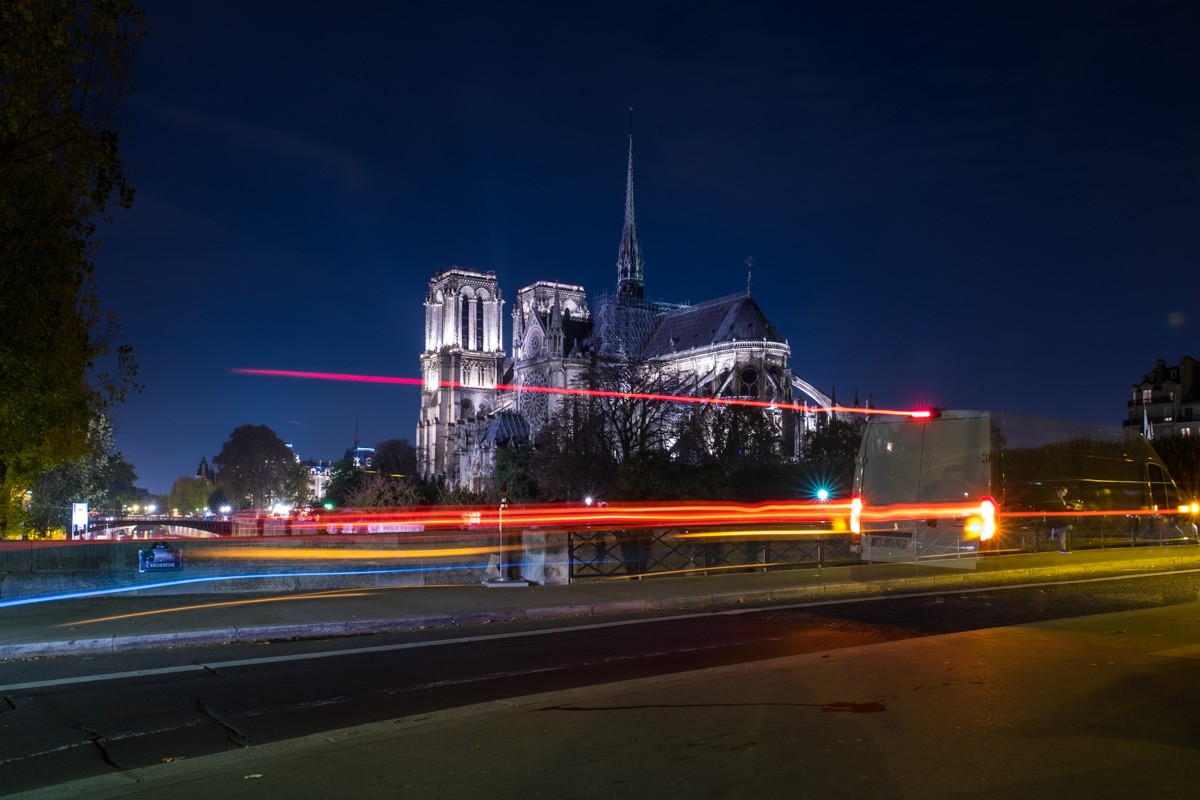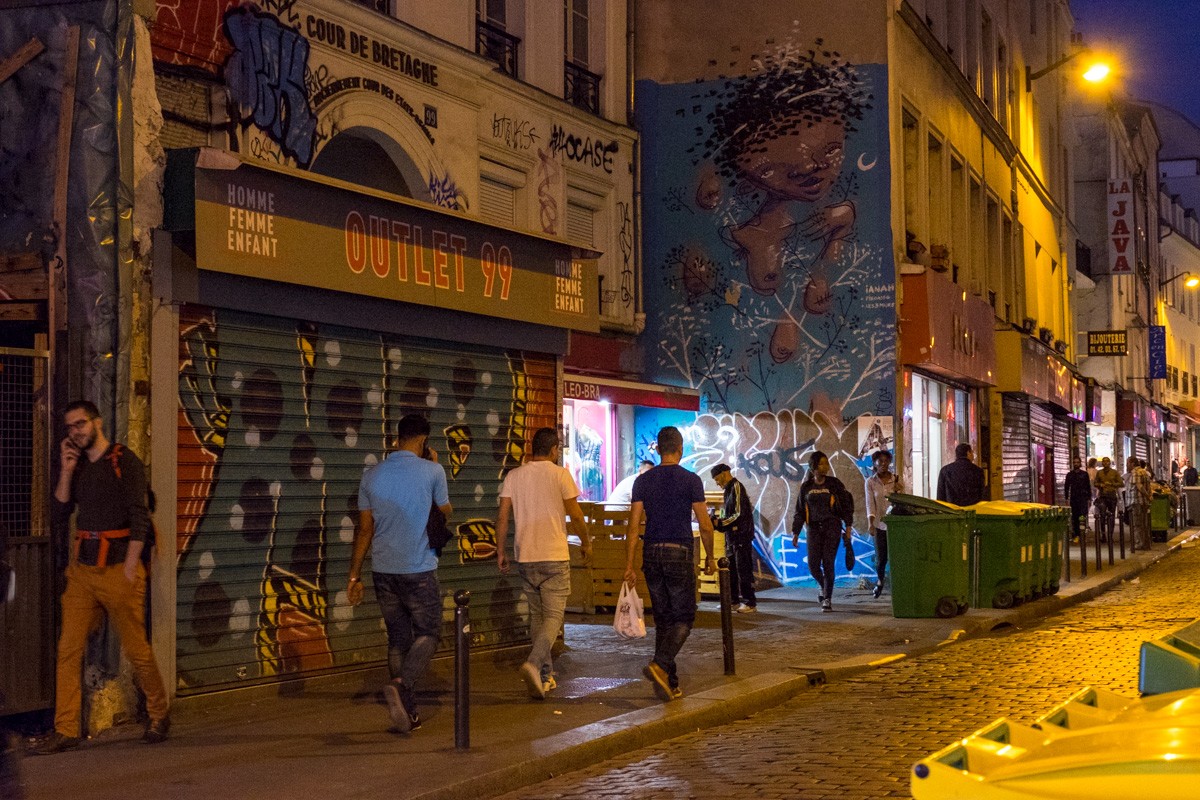Paris City of light is a nickname that I found a bit usurped. During winter, the sun sleeps earlier in the day and gradually, the light gets scarce; my opportunities for street photography are limited. I thought, "That is okay, Paris is the city of light, its beautifully lit monuments will be enough for some pretty shots!" How naïve was I? A pretty big one...

The difficulties of night photography lie in the relative absence of light. Indeed, without it, photography is impossible. All image capture devices need natural or artificial light to function properly. If light is scattered, it will necessarily increase the time to capture the available light by lowering the shutter speed of our camera, in order to obtain a well exposed picture (neither too dark nor too white).Below is a comparison of exposure on the same shot. The first third of the photo is underexposed, the second third is well exposed, the last third is overexposed.

Under these conditions, to freeze an image is then much more complicated. By lowering the shutter speed too much, you end up with blur effects (which can be quite artistic). Admittedly, it becomes easy to read the movements, the sensor recording everything during a relatively long period of time, which adds blurry streaks onto the picture. Moreover, if the shutter speed is too slow, the blur caused by the impossibility of the human body to remain perfectly immobile for even half of a second, will drastically increase the rate of failure of sharp pictures. To be honest, I even hold my breath to avoid those shaky blurry pictures. It's always frustrating when you are overconfident with your stillness capabilities and end up with shaky and failed photos.

Another setting exists for conditions where light is scarce: increase the sensitivity of the "photo film", that is to say the ISO. This is inherited from film photography. At that time, films from 100 to 400 ISO could be purchased. It was very inconvenient, because once the film was inserted into the camera; we had to use the same sensitivity until the end of the film. Digital technology has made ISO management much more flexible.
An ISO 200 film is more sensitive to light than a 100 ISO. Which means, it will take less time to capture the same amount of light compare to the lower ISO film? However, this comes at a price: the more you increase the ISO, the more the quality and the color rendering of the picture are negatively altered.

Even though DSLR and hybrid cameras are constantly revolutionizing the world of digital photography with impressive low-light capabilities, these devices are expensive. Very expensive, and even for these high-end cameras, do not expect miracles, night photography requires the purchase and the use of a good tripod. I think I lost half of my very intimate audience on the way... All that to say that winter is not the best season for street photography.
After this technical parenthesis, I go back to the basic topic: Paris City of light. Walking at night in the streets of the capital of France, I tried to chase the light. But as I said above, I had to increase the ISO setting to freeze the movements and capture "street moment" but the overall quality of my photos did not please me. So I focused on infrastructure and buildings.
Then, as I told you before, I had to rediscover Paris with the enthusiasm of a tourist. Is there a better way to feel like a tourist than through the visit of the city’s historic monuments? A city only reveals its true face once the sun is down. I have never been a huge fan of the yellowish light of the Parisian lampposts. And I think it's mutual, as it adds a completely disgusting atmosphere and spoils all my night photos. Paris has an ugly face at night.

Fortunately, Christmas markets and other decorations saved my photographic night trips. To my greatest regret, the vast majority of lights that illuminate the streets of the capital are those of shop fronts, their signs and advertising posters... Nothing very photogenic, we are far from the lights of Time Square or anarchic piles of signboards overhanging the streets of Hong Kong.

From a tourist point of view, I was badly surprised to see that some monuments were not lit at night. My ecological side was gladly satisfied, while my photographic inspirations were hurt. Indeed, since the great wheel located in the Place de la Concorde was removed, at night, the obelisk remains in the dark. And on the Place de la Bastille, it is the opera and its steps that capture all the attention. The golden glow of the cherub at the top of the tower in the middle of the square is not distinguishable in the dark.
As for the queen of the capital, the Eiffel Tower, she lost all her charms when some have decided to isolate her by building a glass case around the most visited paid monument in the world. A few years ago, when she was accessible 24/7, one could freely access the forecourt. I remember the impression of smallness that I felt when I passed under these tons of iron and steel. I told myself then that it was necessary to pay attention to the possible spitting that could fall on me... Now to admire under the skirt of the iron lady and to feel this little blow of adrenaline and the possible spitting coming from the top of the tower, you have to queue. I'm Parisian, I complain about everything, but queuing to be spat upon... No thanks!

I start to wander in my mind and say a lot of shit... I leave you with the complete gallery entitled: Paris by Night. If you appreciate my work, let me know, it's always appreciated. I'll meet you next week, until then; take care of yourself and your relative.
Kitofoto
PS: I hope you have made good resolutions and stick to them!
